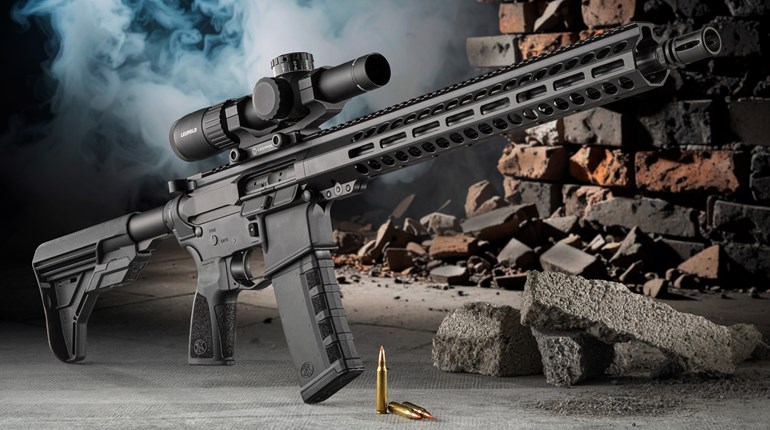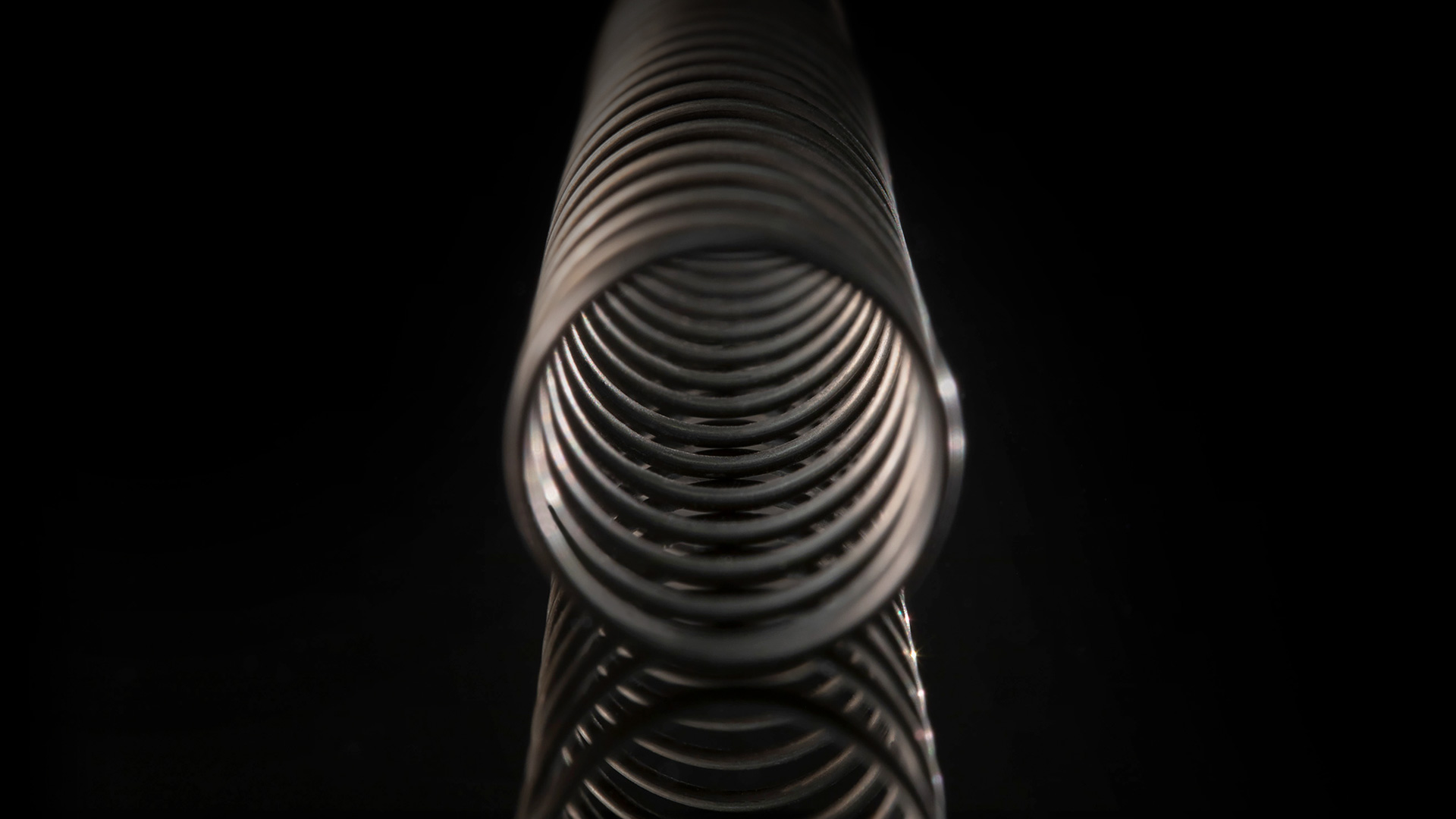
The once-moribund 10mm has quietly made a comeback of sorts. While the .45 ACP is now sometimes referred to as the “.45 AARP,” the 10 mm is a sure way of one-upping the 9 mm crowd. It connotes a veteran shooter, that you are strong or tough enough to deal with the kick, or that you regularly encounter threats beyond those that can be adequately dealt with by the ubiquitous 9 mm.
Built in Turkey by Girsan and imported by European American Armory, the MC1911 C 10mm is a compact, all-steel 1911 with fully adjustable rear sights and all the current 1911 niceties. It’s only failing in terms of modernity may be that it is not optic-ready.
The MC1911 has a traditional barrel lockup with a solid bushing and a thick-walled (but not bull) barrel. The barrel is neither Government nor Commander length, but rather 4.4 inches. Staccato settled on this length for many of its 2011 pistols, but I’m not sure if that had any influence here. Ballistic-ally, there is some velocity drop-off, with tested loads being about 150 fps slower than advertised from full-size pistols.
The gun is offered in matte stainless steel, black, bi-tone and FDE. The weight of the solid steel should promote durability and dampen felt recoil, but it seems a bit much to have hanging from your hip all day, every day. In the age of polymer pistols, an all-steel 1911 carry gun seems anachronistic. The 1911 was meant for uniformed duty carry. To make it suitable for concealed carry, one of the first requirements was to make it lighter, as was done with Colt’s Lightweight Commander.

So, what’s the practical reasoning behind the MC1911 C? Well, if you are indeed a veteran shooter not averse to recoil, it does provide a considerable boost in muzzle energy, surpassing not only the 9 mm, but also the .40 S&W, .45 ACP, .44 Spl. .45 Colt, .357 SIG and most any other common defensive cartridge. In fact, it’s still issued to highly trained, specialized tactical teams, but those individuals tend to be exceptional. As for the rest of us, if you can control it and don’t mind the weight, the added power is a good thing.
Often compared to the .41 Mag., the 10mm is really a step down in power from that failed police cartridge that nonetheless found a home with hunters and metallic-silhouette shooters. And though the 10 mm may not be as powerful in terms of muzzle energy, this pistol makes up for that with increased firepower, nine rounds being a 50-percent firepower improvement over the wheelgun.
I suspect the reasoning behind the 10 mm, beyond those already stated, is that not all threats are human. If you live in bear or cougar country, you may need a little more “’oomph.” The 10mm offers versatility in that it should be a considerable manstopper and an adequate large-predator stopper. It may be the most practical chambering for that dual role.
That said, I can’t imagine wearing it all day, every day, but could see toting it for a few hours when going afield in a dangerous area. I’d otherwise keep it secured in a vehicle pistol vault. It occurred to me that it might be something that would appeal to rangers and game wardens. It was a good guess. In doing some research, I discovered that 10 mm-chambered pistols are issued to officers in Northeast Greenland as last-ditch defense against polar bears. Yeah, you read that correctly.
Range time was not without its difficulties. Our sample had a pleasingly tight fit, but was quite stiff. We couldn’t seat a fully loaded magazine if a round was already chambered and the slide was forward. We had to download a round or two, but that would likely change with added break-in.
There were also repeated failures to extract and eject. The jams were easy to clear, just annoying. I donned a padded shooting glove while testing the MC1911 C. It helped, but it also caused trouble in disengaging the grip safety late in testing, which is hardly the fault of the gun.
The trigger of this pistol is far from ideal. It is very hitchy and compromised accuracy. The well-fitted gun seemed otherwise capable of good accuracy, but every three- or four-shot group was then ruined by a called flier or two. I freely admit that pain and fatigue may have factored into shooting this 10 mm. In addition to the glove, I ended up taping a pad to my trigger finger.
The sight picture of the fiber-optic-enhanced post against the square notch of the serrated, all-black rear was good while it lasted. The fiber-optic worked loose. I captured it just before it fell out the first time. I was not so lucky the second time; it’s now hidden somewhere on the range. The elevation screw of the rear sight backed out during testing. I was able to find that and reinstalled it.
Much of the gun’s troubles are due to prolonged firing of a powerful cartridge, not exactly what the platform was built for. A little super glue on the fiber-optic and some tool-removable threadlocker on the elevation screw would likely solve those problems. The trigger would benefit enormously from a little professional gunsmithing.
If we assume that improved reliability will come with break-in (or if we spring for a reliability package in addition to a trigger job), the MC1911 C 10mm has a lot going for it: 1911 ergonomics, muzzle energy, rust resistance and relative compactness. Sure, it’s heavy, but it should do what it’s designed to do, which is to provide protection from a variety of determined threats of either the two- or four-legged variety when lesser calibers would not.






































